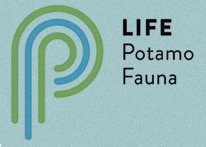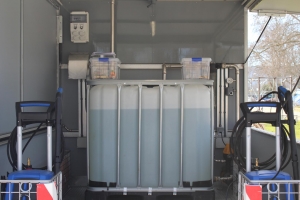The mobile station for disinfection of the Zebra Mussel in Estany de Banyoles has disinfected 1,500 vessels in just four months
This station it was presented on March the 1st, it is located in the facilities of Club Natació Banyoles and has been financed through the LIFE Potamo Fauna project
Since its start-up, on March the 1st, the mobile station of disinfection installed in the Estany de Banyoles for the prevention of the introduction of the Zebra Mussel (Dreissena polymorpha) has disinfected a total of 1,191 vessels both for competitions, recreational and ordinary activities. The investment for its construction and start-up was 37,500 euros and was financed through the European project LIFE Potamo Fauna "Conservation of fluvial fauna of European interest in the Natura 2000 network of the river basins of the Ter, Fluvià and Muga".
This disinfection station works in single place at one of the entrances to the facilities of Club Natació Banyoles, where a concrete platform was adapted with a drain to the wastewater network, plugged into the mains and can use water from both the potable or lake network. At the same time it is also a mobile station, and can be transported to another area where a sports event is performed, running autonomously.
Of the 1,191 disinfected vessels, there are four different modalities: rowing (484 skiff, 361 doubles, 179 four, 29 eight), canoeing or kayaking (125), Dragon-boat (2) and lute (11). These disinfections has been carried out by LIFE Potamo Fauna staff from the Consorci de l’Estany, which have devoted 102 hours and with a team of between two and four people depending on the activity. The events in which they have participated have been organized by Club Natació Banyoles, the Catalan Rowing Federation, the Spanish Rowing Federation, the Catalan Canoeing Federation, DragonBoats Emotions and CAIAC Natura. Also, there have been international stays, from the Rowing Federation of Chile, the Argentine Rowing Federation, Queen's University or Putney High School, among others. Among the events where the boats were disinfected are the DragonBoat Festival, the Fourth Ciutat de Banyoles Trophy, the Catalonia Canoeing Marathon Championship or the Open International Catalunya de Rem.
Since 2012, the Catalan Water Agency conducts control of the waters of Banyoles Lake within the Catalan monitoring network to confirm the presence or absence of Zebra Mussels; to date, the results indicate that there is no presence in the area.
Zebra mussels
The zebra mussel is an elongated and triangular bivalve with dark transverse bands often in zigzag shape. It can grow up to 4 cm and a single female can produce a million larvae per year. It is subjected to the substrate by means of a foot similar to that of marine mussels forming colonies of thousands of individuals. They live in fresh water, tolerating certain salinity. It is unusual in current waters but can be very abundant in reservoirs and lakes.
It forms populations of thousands of specimens that overshadow the bottom causing significant alterations in the trophic chain by displacing native bivalves. When paying attention to the shells of other mollusks, especially the naiads, causes their suffocation by preventing their breathing. Its enormous filtration activity modifies the transparency of the water and causes massive growths of algae and other plants. It also modifies the biodiversity of the ecosystems that colonizes.
The socioeconomic problems related to this species can be very important, causing damage to hydraulic infrastructures, of irrigation, plugging circuits and pipes in power stations, water catchments, sewage treatment plants, etc. It can cause water pollution due to massive mortalities of the populations. Empty shells on the margins may cause injury to swimmers. It can also cause the coating of fouling and all types of hard substrates or installations in the water (wiring, buoys, etc.). A study by the Hydrographic Confederation of the Ebre estimates the economic impact (studies, monitoring, control actions, repairs in hydraulic and energy facilities) at an approximate cost of 105 million euro since 2001, which was detected the species in the Ebre until 2025.

















